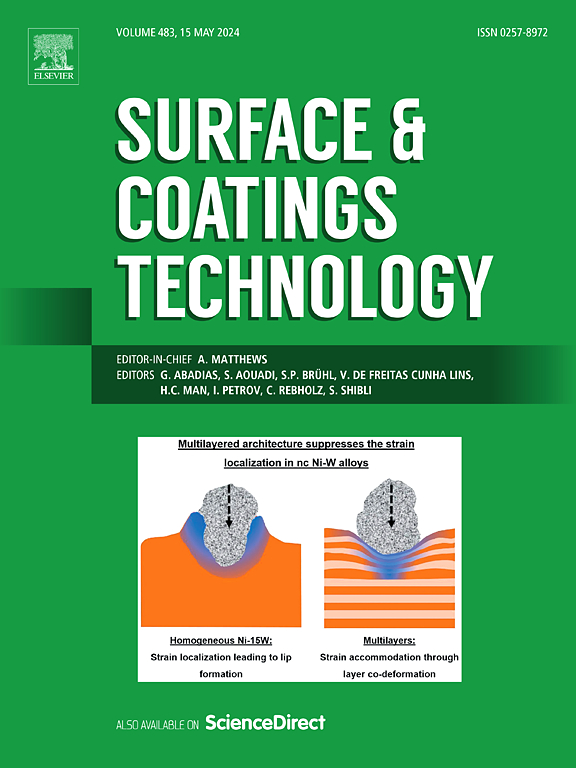Preparation of NiAlW coating by APS and HVOF spraying: Microstructure evolution, mechanical properties, and high-temperature tribological behavior
IF 5.3
2区 材料科学
Q1 MATERIALS SCIENCE, COATINGS & FILMS
引用次数: 0
Abstract
The wear-resistant NiAlW coatings were prepared using atmospheric plasma spraying (APS) and high-velocity oxygen fuel (HVOF) techniques, respectively. The microstructure, mechanical properties, and tribological performance of the coatings were studied, and the wear mechanisms were explored. The results showed that the NiAlW coatings produced by both techniques are primarily composed of the NiAl phase, with the HVOF-prepared coating exhibiting higher density, hardness, and adhesive strength. In the wear test at 200 °C–800 °C, the friction coefficient (COF) and wear rate of APS-prepared coating (A-NiAlW) and HVOF-prepared coating (H-NiAlW) showed a trend of first increasing and then decreasing. At low temperature of 200 °C, A-NiAlW coating was mainly abrasive wear and oxidation wear, while H-NiAlW coating was mainly abrasive wear and adhesion wear. When the temperature rose to 400 °C, both coatings faced relatively serious adhesive wear, resulting in an increase in COF and wear rate. Under high-temperature conditions, the significant generation of self-lubricating phases such as NiAl2O4 and NiWO4 provided good lubrication effects, effectively reducing wear and resulting in excellent tribological performance for both coatings at elevated temperatures.
求助全文
约1分钟内获得全文
求助全文
来源期刊

Surface & Coatings Technology
工程技术-材料科学:膜
CiteScore
10.00
自引率
11.10%
发文量
921
审稿时长
19 days
期刊介绍:
Surface and Coatings Technology is an international archival journal publishing scientific papers on significant developments in surface and interface engineering to modify and improve the surface properties of materials for protection in demanding contact conditions or aggressive environments, or for enhanced functional performance. Contributions range from original scientific articles concerned with fundamental and applied aspects of research or direct applications of metallic, inorganic, organic and composite coatings, to invited reviews of current technology in specific areas. Papers submitted to this journal are expected to be in line with the following aspects in processes, and properties/performance:
A. Processes: Physical and chemical vapour deposition techniques, thermal and plasma spraying, surface modification by directed energy techniques such as ion, electron and laser beams, thermo-chemical treatment, wet chemical and electrochemical processes such as plating, sol-gel coating, anodization, plasma electrolytic oxidation, etc., but excluding painting.
B. Properties/performance: friction performance, wear resistance (e.g., abrasion, erosion, fretting, etc), corrosion and oxidation resistance, thermal protection, diffusion resistance, hydrophilicity/hydrophobicity, and properties relevant to smart materials behaviour and enhanced multifunctional performance for environmental, energy and medical applications, but excluding device aspects.
 求助内容:
求助内容: 应助结果提醒方式:
应助结果提醒方式:


